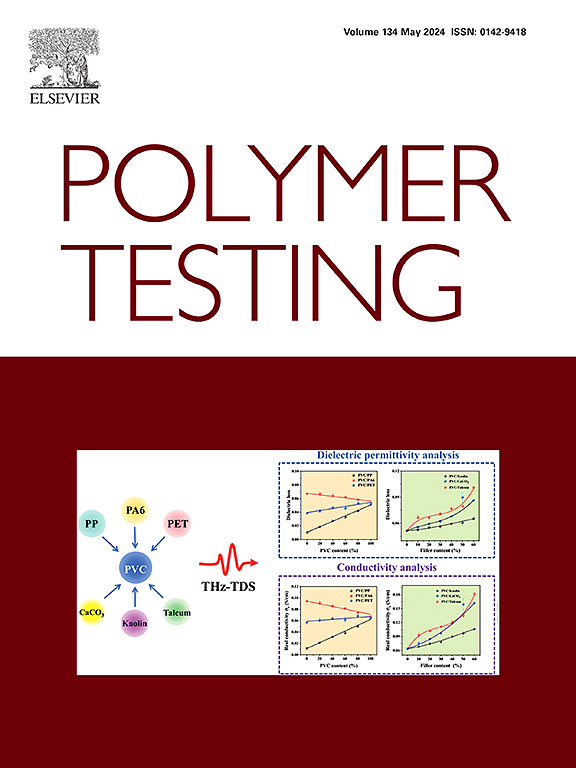The nonlinear viscoelasticity and its asymmetry of UV-cured resin under large amplitude oscillatory axial (LAOA) loading
IF 5
2区 材料科学
Q1 MATERIALS SCIENCE, CHARACTERIZATION & TESTING
引用次数: 0
Abstract
Solid viscoelastic materials often undergo large amplitude oscillatory axial (LAOA) loading and exhibit complex asymmetric nonlinear viscoelasticity in many practical applications. The methods used to analyze the nonlinear viscoelasticity of non-Newtonian fluid under large amplitude oscillatory shear (LAOS) cannot be directly applied to the corresponding situation of solid viscoelastic materials due to strict symmetry of LAOS. In this work, a typical UV-cured resin mainly used for 3D printing is chosen to investigate the nonlinear viscoelasticity and its asymmetry under LAOA loading. Based on Fourier transform, the geometric description of stress–strain curve is used to quantitatively characterize the asymmetric nonlinear viscoelasticity. Further, the global asymmetry ratios of nonlinear viscoelasticity under LAOA loading are developed based on the sequence of physical process (SPP) approach throughout the entire oscillatory cycle. We also define an asymmetric ratio of nonlinear viscoelasticity with clear physical meaning from the perspective of energy, which can comprehensively characterize the nonlinear elastic and viscous behavior during the tensile and compressive phases within an oscillatory cycle. Besides, the influences of oscillatory frequency and UV exposure time on asymmetric nonlinear viscoelasticity of UV-cured resin under LAOA loading can be captured as well. These approaches are suitable for evaluating the asymmetric nonlinear viscoelasticity of a large category of viscoelastic solid materials under LAOA loading, which is crucial for analyzing the nonlinear viscoelastic mechanism and for corresponding engineering applications.
求助全文
约1分钟内获得全文
求助全文
来源期刊

Polymer Testing
工程技术-材料科学:表征与测试
CiteScore
10.70
自引率
5.90%
发文量
328
审稿时长
44 days
期刊介绍:
Polymer Testing focuses on the testing, analysis and characterization of polymer materials, including both synthetic and natural or biobased polymers. Novel testing methods and the testing of novel polymeric materials in bulk, solution and dispersion is covered. In addition, we welcome the submission of the testing of polymeric materials for a wide range of applications and industrial products as well as nanoscale characterization.
The scope includes but is not limited to the following main topics:
Novel testing methods and Chemical analysis
• mechanical, thermal, electrical, chemical, imaging, spectroscopy, scattering and rheology
Physical properties and behaviour of novel polymer systems
• nanoscale properties, morphology, transport properties
Degradation and recycling of polymeric materials when combined with novel testing or characterization methods
• degradation, biodegradation, ageing and fire retardancy
Modelling and Simulation work will be only considered when it is linked to new or previously published experimental results.
 求助内容:
求助内容: 应助结果提醒方式:
应助结果提醒方式:


